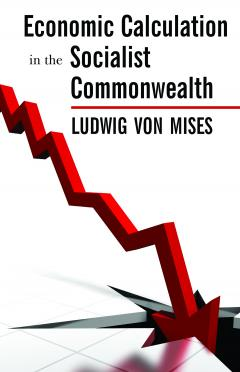A society without monetary calculation, that is, a socialist society, is therefore quite literally a society without an economy. Thus, contrary to what has become the conventional interpretation by friend and foe alike, Mises was not indulging in rhetorical hyperbole but drily stating a demonstrable conclusion of economic science when he declared in this article:
Without economic calculation there can be no economy. Hence in a socialist state wherein the pursuit of economic calculation is impossible, there can be—in our sense of the term—no economy whatsoever. . . . Socialism is the abolition of rational economy.--Joseph T. Salerno, postscript to Economic Calculation in the Socialist Commonwealth, by Ludwig von Mises (1990; repr., Auburn, AL: Mises Institute, 2012), 49, 53-54.













